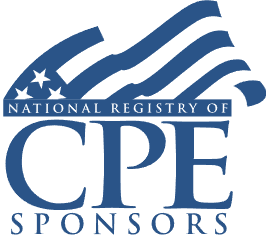Navigating State Voluntary Disclosure Programs: Multistate and Single State Programs to Resolve Unseen Liabilities
Minimizing or Avoiding Penalties and Interest, Identifying Nexus Problems, and Quantifying Unseen Liabilities

Course Details
- smart_display Format
On-Demand
- signal_cellular_alt Difficulty Level
Intermediate
- work Practice Area
Corporate Tax
- event Date
Tuesday, May 24, 2016
- schedule Time
1:00 PM E.T.
- timer Program Length
110 minutes
-
BARBRI is a NASBA CPE sponsor and this 110-minute webinar is accredited for 2.0 CPE credits.
-
Live Online
On Demand
This course will provide tax advisers with a detailed and practical guide to navigating the multistate voluntary disclosure programs (VDPs) for noncompliant taxpayers with potential but unassessed state tax liabilities through a central point of contact. The panel will also discuss the nuances of individual states’ VDPs and outline strategies for determining whether and when to utilize a VDP to achieve favorable tax results, with a practical focus on what a company needs to do to come into full tax compliance while avoiding criminal exposure, and minimizing taxes as well as penalties and interest.
Description
Most states have VDPs that allow taxpayers to resolve tax bills accrued during a defined look-back period. In addition, almost three-quarters of U.S. states, plus the District of Columbia, participate in a multistate VDP to assist taxpayers by providing an integrated, uniform procedure for settling unpaid back taxes. Utilizing VDPs can be a key strategy in resolving tax liabilities in a way that avoids penalties and interest on unpaid taxes, while quantifying unreported tax liabilities.
A significant advantage to VDPs is the opportunity most programs present for companies to address issues of expanded nexus. As states continue to look for mechanisms to tax economic activity that does not include physical presence within their jurisdictions, nexus expansion takes on a larger role in states’ taxing regimes. Taxpayers often find themselves with unanticipated tax liabilities, and VDPs can serve as a way to identify these liabilities while protecting the taxpayer from open disclosure.
Detailed and complex rules govern participation in VDPs, and tax advisers must be aware of their role and duties in utilizing a VDP.
Listen as our experienced panel provides a comprehensive guide to the benefits, risks and processes of VDPs, both at the multistate and individual state level.
Outline
- “Creeping nexus” and reserves for uncertain tax positions as triggers
- What is the voluntary disclosure program
- Taxpayer goals and strategies in VDPs
- Mechanics of multistate VDPs
- Mechanics of individual state VDPs
- Voluntary disclosure agreements
Benefits
The panel will review these and other important issues:
- When should a taxpayer elect to apply for VDP participation
- Nexus issues that can arise from a VDP participation, and how can taxpayers avoid risk of additional tax from expanded nexus
- Means to achieve penalty abatement both inside and outside of VDP
- How multistate VDPs work in comparison, and conjunction, with individual states’ VDPs?
- Illustration using Massachusetts and surrounding states’ VDPs
NASBA Details
Learning Objectives
After completing this course, you will know how VDPs work, both at the multistate and individual state level. You will know how to determine whether a VDP is the best strategy for a taxpayer to resolve potential but unrecognized tax liabilities, and what goals a taxpayer should pursue in participating in a VDP.
- Field of Study: Taxes
- Level of Knowledge: Intermediate
- Advance Preparation: None
- Teaching Method: Seminar/Lecture
- Delivery Method: Group-Internet (via computer)
- Attendance Monitoring Method: Attendance is monitored electronically via a participant's PIN and through a series of attendance verification prompts displayed throughout the program
- Prerequisite: Basic knowledge of taxation.

Strafford Publications, Inc. is registered with the National Association of State Boards of Accountancy (NASBA) as a sponsor of continuing professional education on the National Registry of CPE Sponsors. State boards of Accountancy have final authority on the acceptance of individual courses for CPE Credits. Complaints regarding registered sponsons may be submitted to NASBA through its website: www.nasbaregistry.org.
Unlimited access to premium CLE courses:
- Annual access
- Available live and on-demand
- Best for attorneys and legal professionals
Unlimited access to premium CPE courses.:
- Annual access
- Available live and on-demand
- Best for CPAs and tax professionals
Unlimited access to premium CLE, CPE, Professional Skills and Practice-Ready courses.:
- Annual access
- Available live and on-demand
- Best for legal, accounting, and tax professionals
Unlimited access to Professional Skills and Practice-Ready courses:
- Annual access
- Available on-demand
- Best for new attorneys
Related Courses

Construction Professional Services Agreements
Available On-Demand

Form 3115 Change in Accounting Method: Navigating the IRS Repair Regulations
Available On-Demand